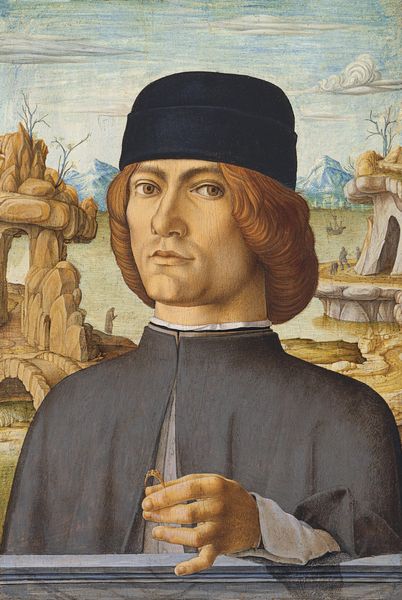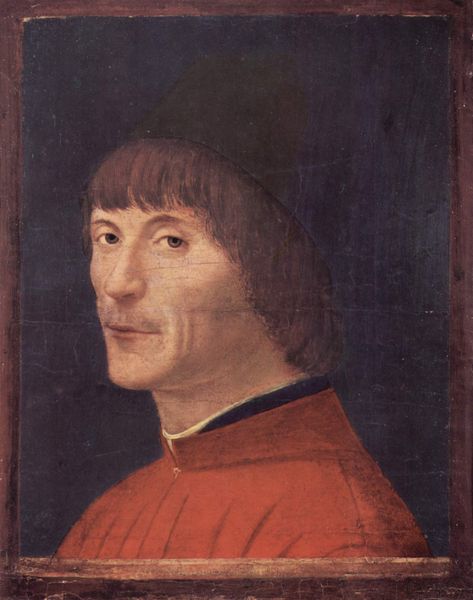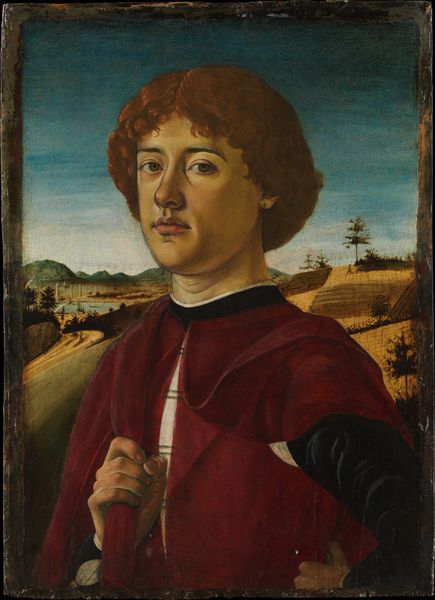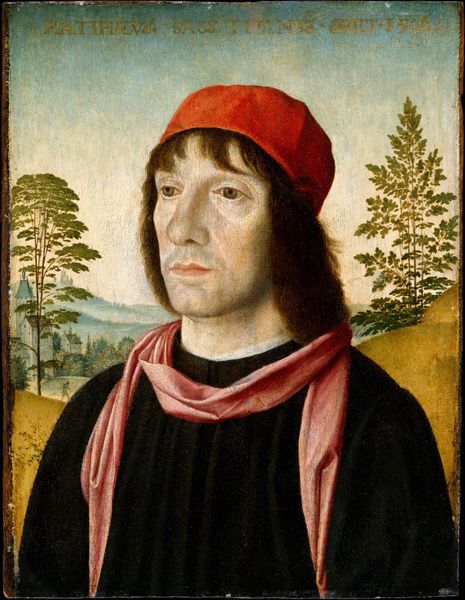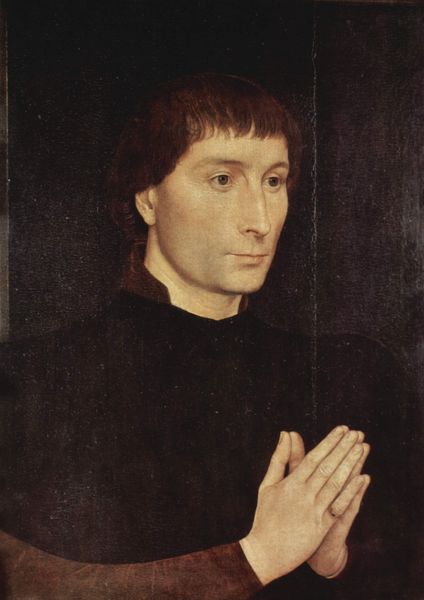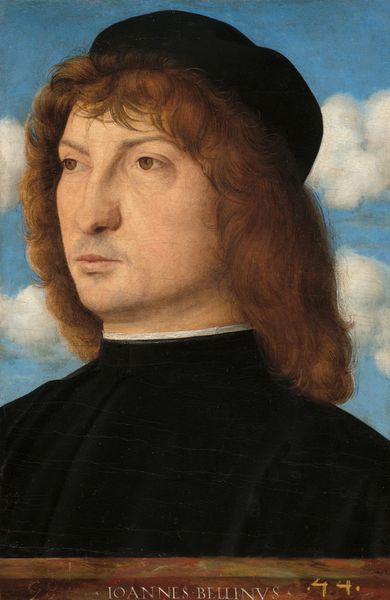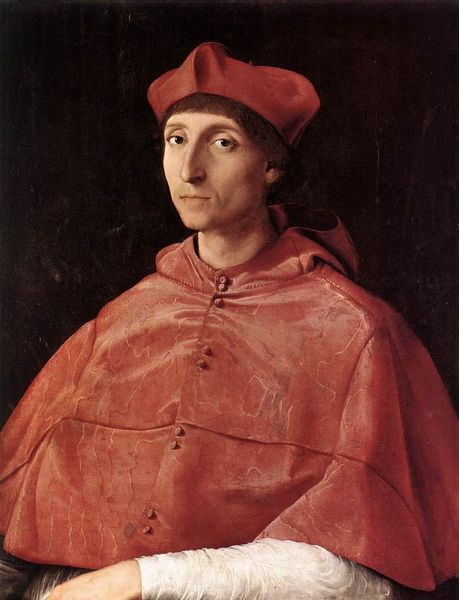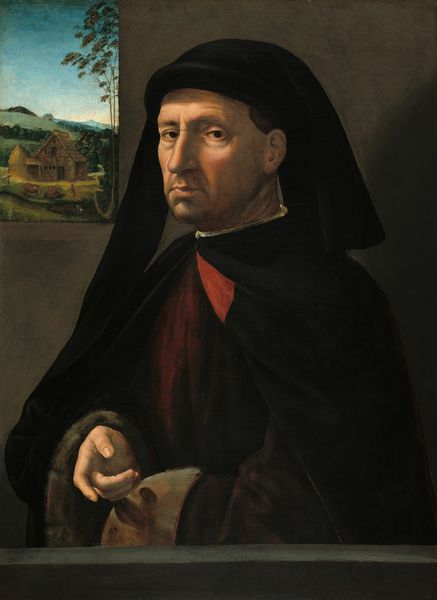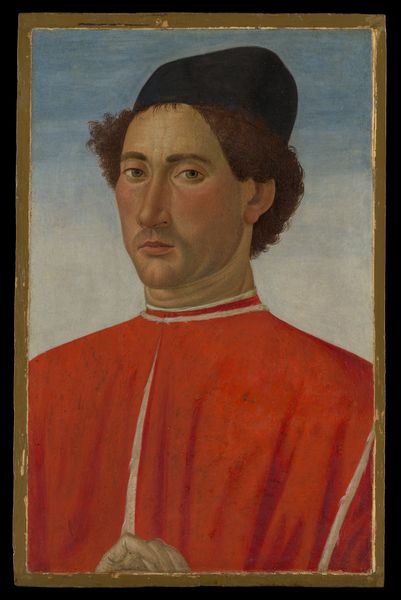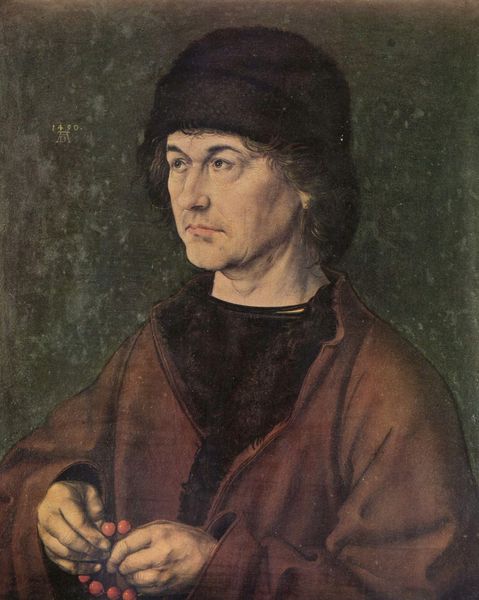
oil-paint
#
portrait
#
oil-paint
#
oil painting
#
italian-renaissance
Dimensions: painted surface: 54.2 x 40.4 cm (21 5/16 x 15 7/8 in.) support: 55.5 x 41.2 cm (21 7/8 x 16 1/4 in.) framed: 86.4 x 74.9 x 8.9 cm (34 x 29 1/2 x 3 1/2 in.)
Copyright: National Gallery of Art: CC0 1.0
Curator: Andrea del Castagno's "Portrait of a Man," circa 1450. A rather austere painting isn’t it? Editor: Yes, a powerful image. I am struck by the almost haunting gaze of the subject, the cool detachment amidst that vivid cloak. It is certainly a painting with many questions. Curator: It is fascinating to consider how oil paint contributed to these textures, isn’t it? Think of the linseed oil being processed, the grinding of pigment. There’s this deep materiality at play, and Castagno had to be an expert craftsman to manipulate it thus. Look at the folds and cascades of fabric. Oil allowed him the precision to sculpt these details. Editor: I think it’s crucial to frame this man's identity. A mid-fifteenth century portrait suggests a figure of considerable status. Notice the color, indicative of access to luxury goods and dyes of the time, and the cut of the robes and the distinct hairstyle; they reflect a certain Florentine cultural identity. He is definitely performing status. Curator: Yes, though I wonder at the performative aspect too: these portraits helped build the notion of “high art.” Did they see it that way then, I wonder? So much of the work would have gone into merely acquiring the materials. How different the concept of art-making must have been then. Editor: The historical implications, the economic relations within Florentine society and artistic patronage, they intersect in such works, they represent identity. Also, portraits like these played a role in cementing power. Art was not merely decorative but functional. Curator: Absolutely, though as we examine the way that Castagno layers oil paint, the tension of his gaze on the viewer, we realize this goes beyond representation into active work. Editor: And understanding the Renaissance workshop environment further contextualizes his achievement and labor in this regard. Curator: I concur completely. Thank you. Editor: Agreed; I see this man’s portrait now as less a neutral painting and much more a declaration of power in paint.
Comments
No comments
Be the first to comment and join the conversation on the ultimate creative platform.
